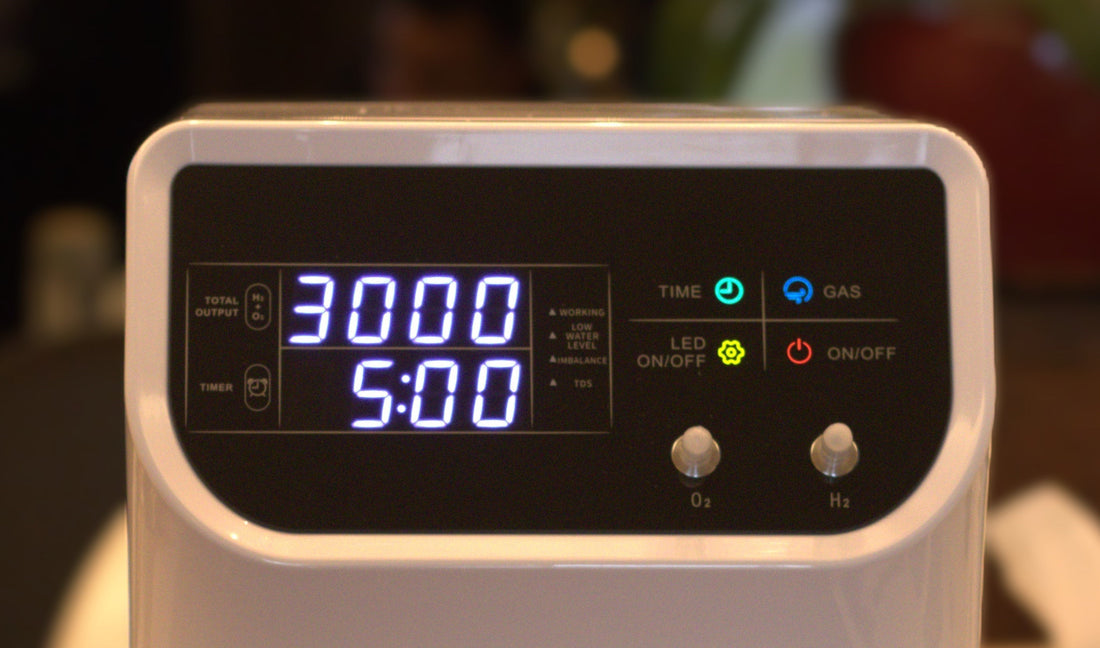Hydrogen Inhalation Therapy for Cancer and Chronic Diseases: Is 3000ml/min The Best? What Recent Research Says
What is Hydrogen Inhalation Therapy?
Hydrogen inhalation therapy involves breathing in hydrogen gas mixed with air or oxygen. Hydrogen gas has anti-inflammatory and antioxidant effects, which means it helps protect cells from damage caused by harmful molecules called free radicals. This therapy is being tested to help treat diseases, especially cancer and chronic conditions.
How Much Hydrogen Gas Should You Breathe?
Most studies conducted recently (2022–2025) suggest that breathing 2–3 liters of hydrogen gas per minute (often mixed with oxygen) is effective. This flow rate is safe and commonly used in research. Sessions typically last from 30 minutes up to several hours per day, depending on the disease.
Recently, some commercial companies have started recommending higher flow rates of around 6 liters per minute, claiming it provides better results. However, the scientific evidence does not currently support these higher flow rates as more beneficial than standard 3 liters per minute.
What Recent Research Shows About Cancer
Studies in recent years show promising results when cancer patients use hydrogen inhalation therapy alongside traditional treatments like chemotherapy and radiation.
-
Patients with advanced cancers who inhaled hydrogen gas (usually 3 liters per minute) for several hours a day reported improved quality of life and fewer side effects from chemotherapy and radiation.
-
Small clinical trials indicate hydrogen therapy may strengthen the immune system, helping patients better fight cancer cells.
-
Hydrogen therapy during radiation treatments for head and neck cancers seemed safe and might reduce side effects like skin and mouth irritation.
However, there are no published studies proving that inhaling 6 liters per minute provides extra benefits.
Research on Other Chronic Diseases
Besides cancer, hydrogen inhalation therapy has shown benefits for several other health issues:
Diabetes:
-
Large studies found that patients breathing hydrogen gas (3 liters per minute) for a few hours daily showed better blood sugar control and fewer diabetes complications.
High Blood Pressure:
-
Patients who inhaled hydrogen gas regularly had better control of their blood pressure than those who didn't, again using the standard 2–3 liters per minute flow rate.
Respiratory Issues (COPD, Asthma, COVID-19):
-
Hydrogen inhalation improved symptoms in patients with breathing difficulties, reducing inflammation in the lungs and improving oxygen levels.
Hearing Loss and Brain Health:
-
Early studies suggest hydrogen therapy might help with hearing recovery after sudden hearing loss and could also provide benefits for age-related memory and cognitive issues.
Is Hydrogen Inhalation Therapy Safe?
Yes, current research clearly shows hydrogen inhalation therapy is safe. Patients in studies rarely experienced side effects. Occasionally, some people reported mild headaches or dizziness, but these symptoms were brief and typically resolved quickly. No serious health problems have been linked to hydrogen inhalation.
Although breathing hydrogen at higher flow rates (6 liters per minute) is considered safe, it can sometimes cause mild discomfort like headaches or dizziness. There is no clear scientific evidence that these higher flow rates are more effective or beneficial than the standard 2–3 liters per minute.
Conclusion: Recommended Usage
-
For cancer and chronic diseases, 2–3 liters per minute of hydrogen gas is the scientifically supported and recommended flow rate.
-
Higher flow rates (like 6 liters per minute) haven't been proven to be more effective, and may cause mild side effects like headaches or dizziness.
-
Hydrogen inhalation therapy shows promise as a complementary treatment, improving patient comfort, health outcomes, and quality of life with minimal risk.
As research continues, scientists hope to further clarify the best ways to use hydrogen therapy effectively and safely.

